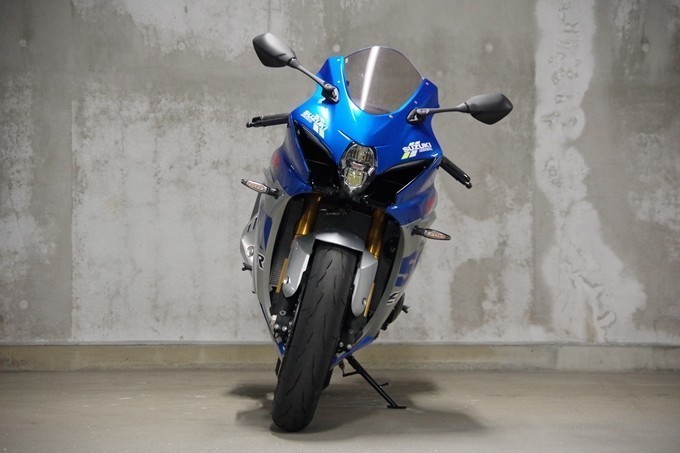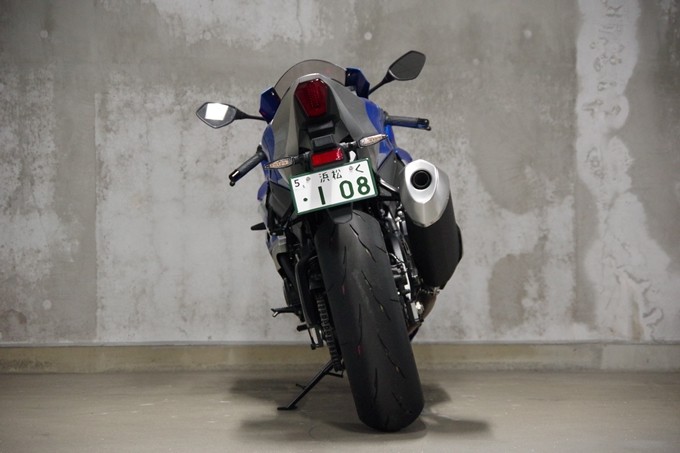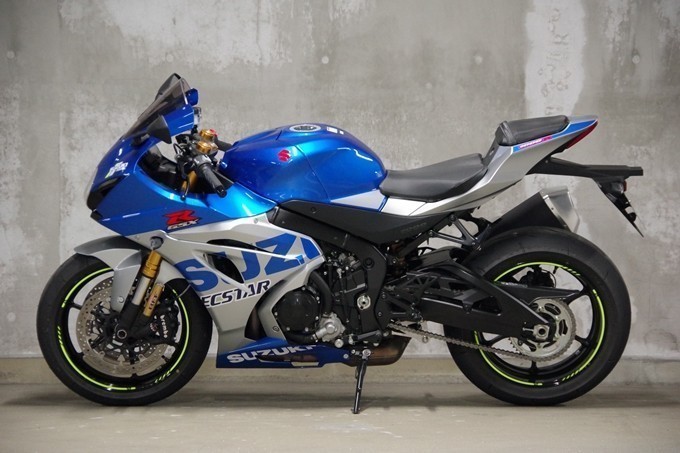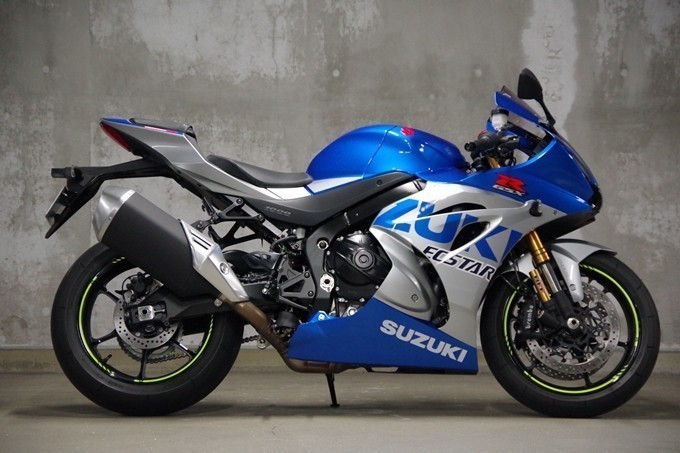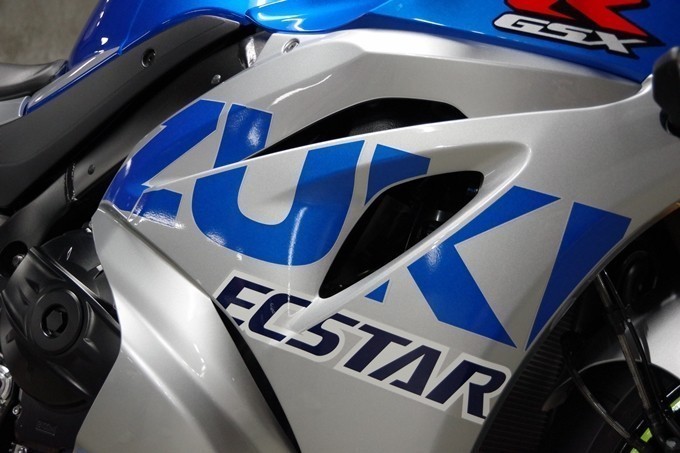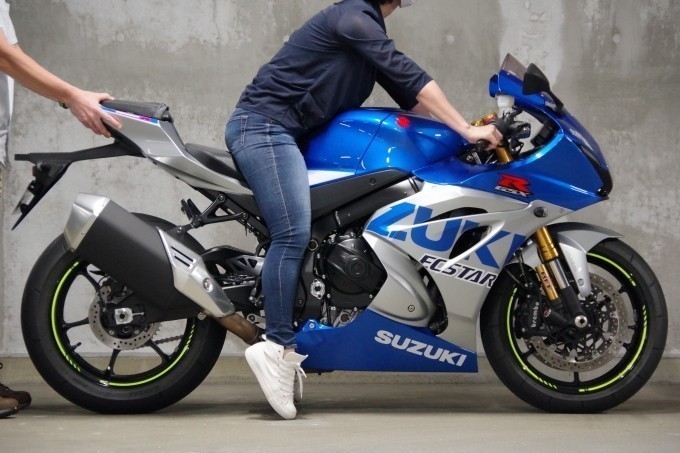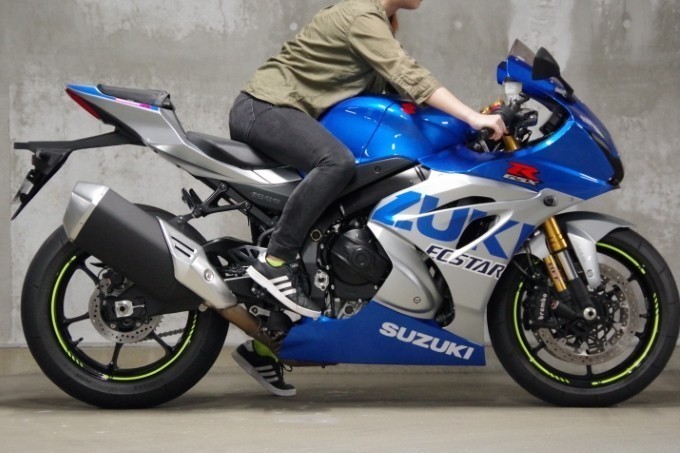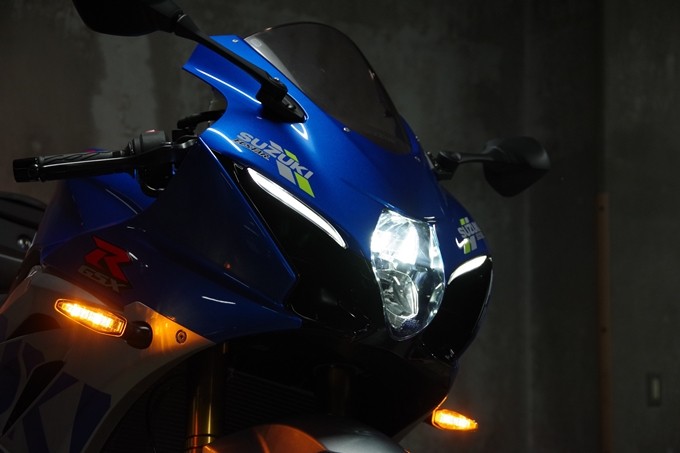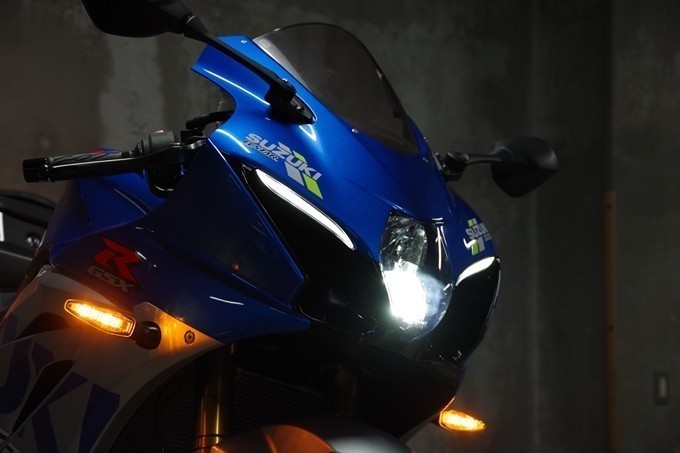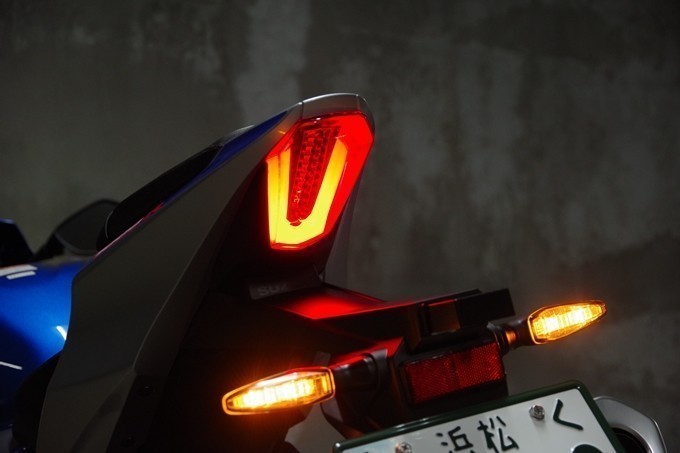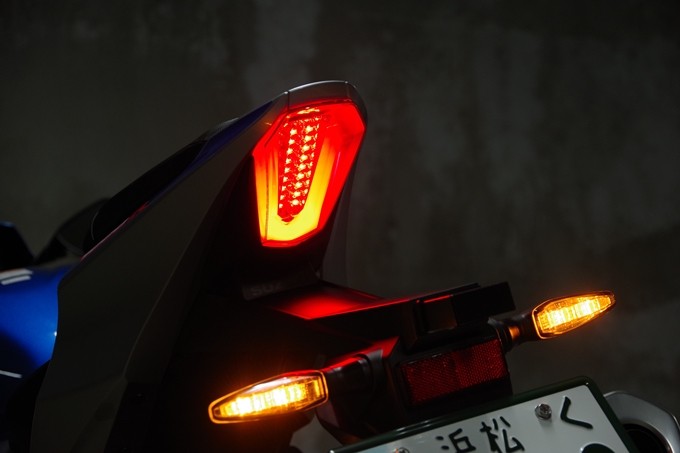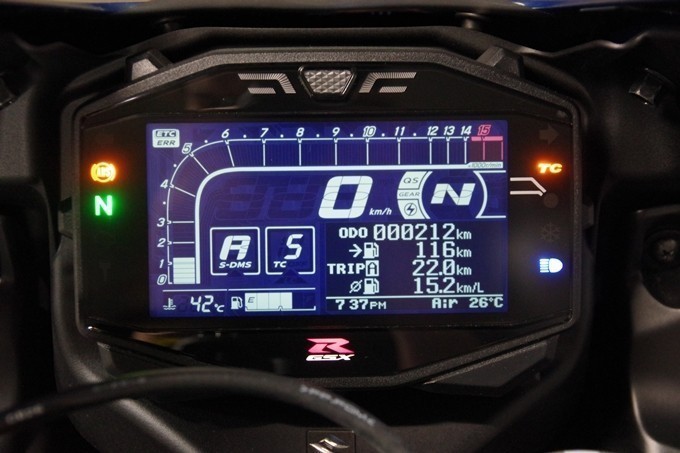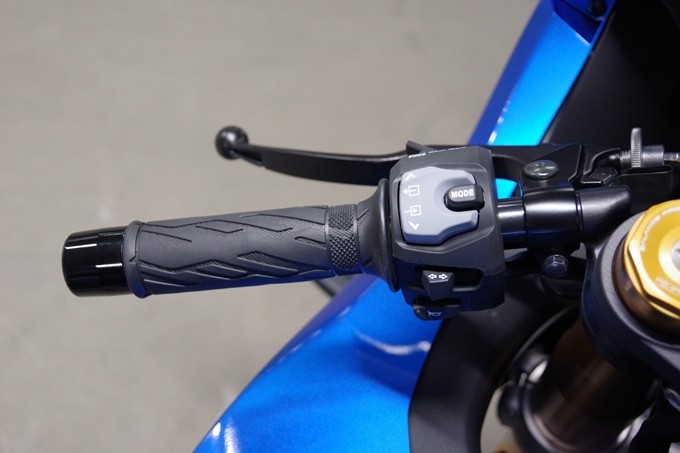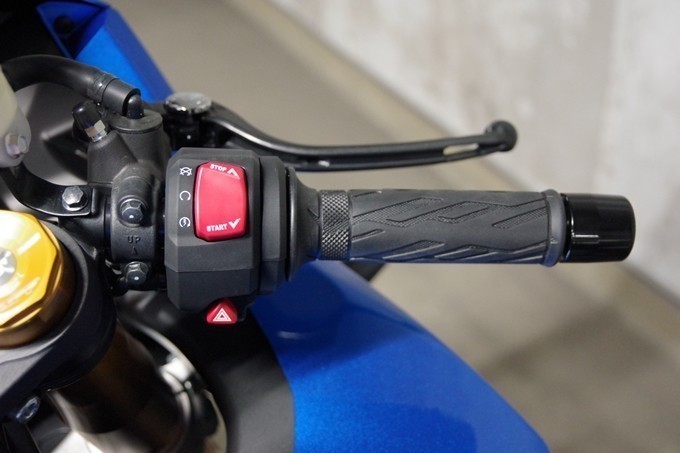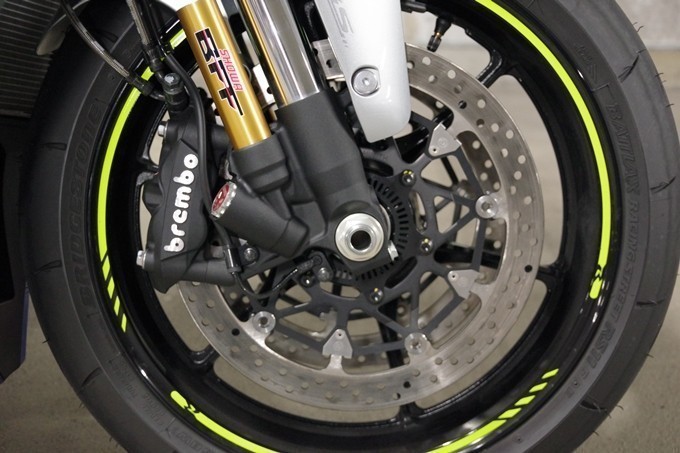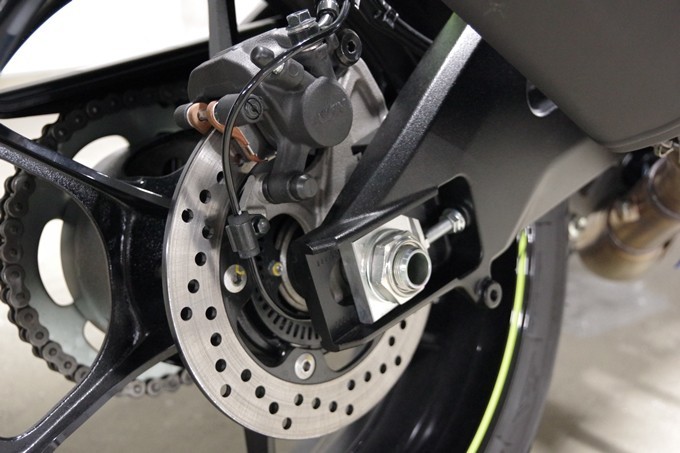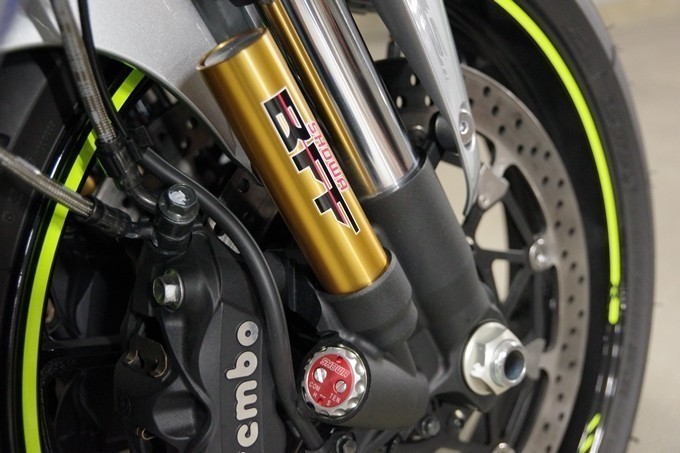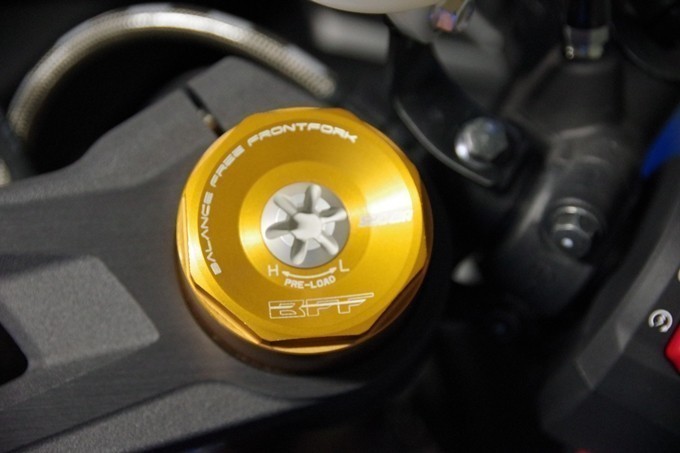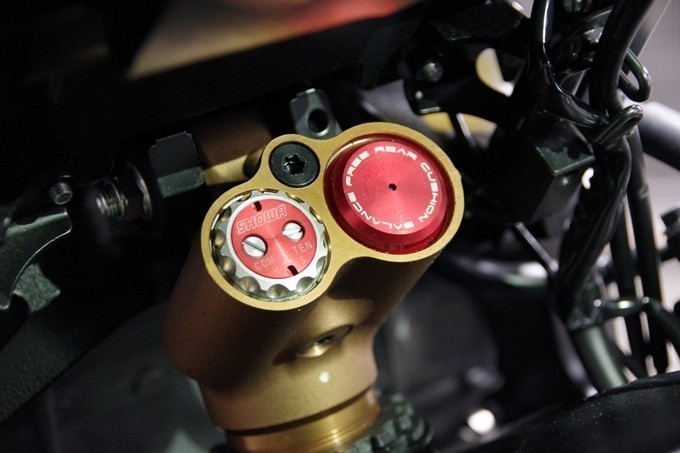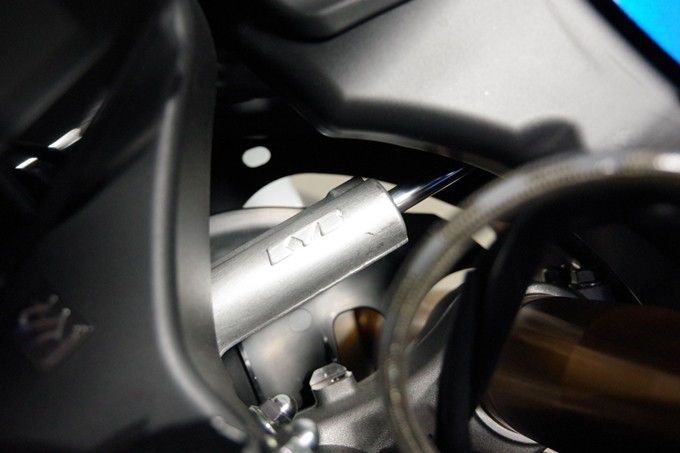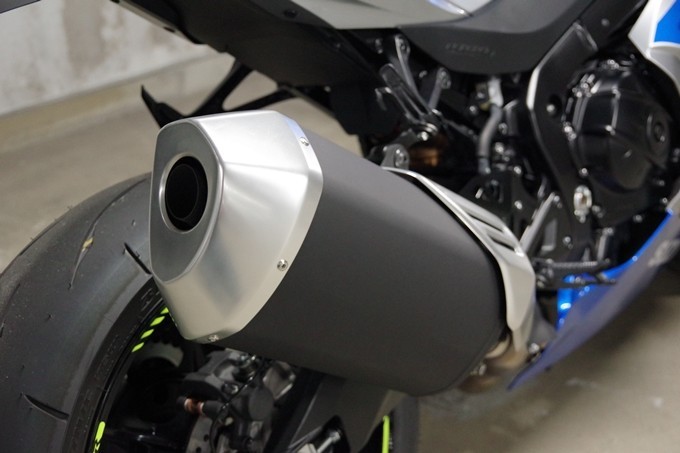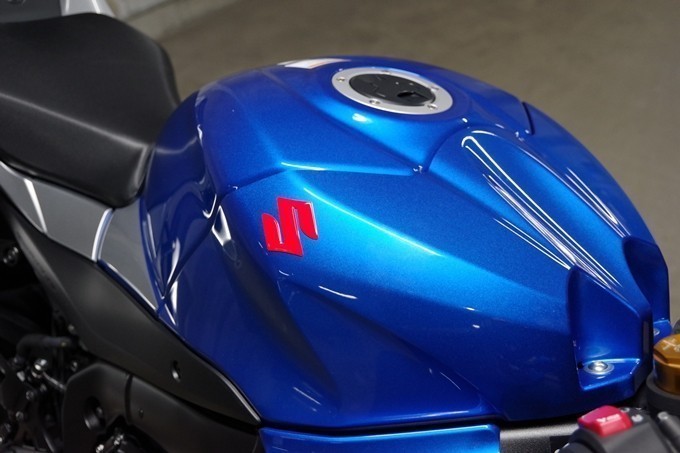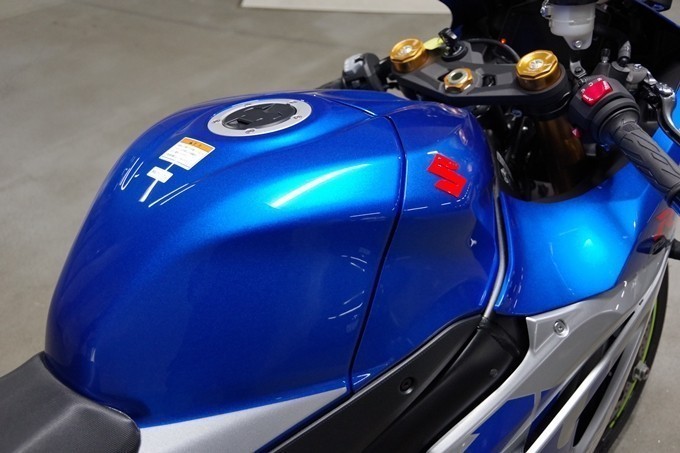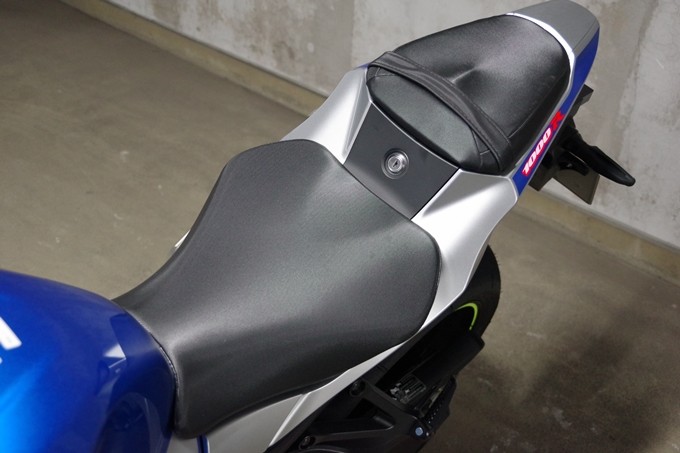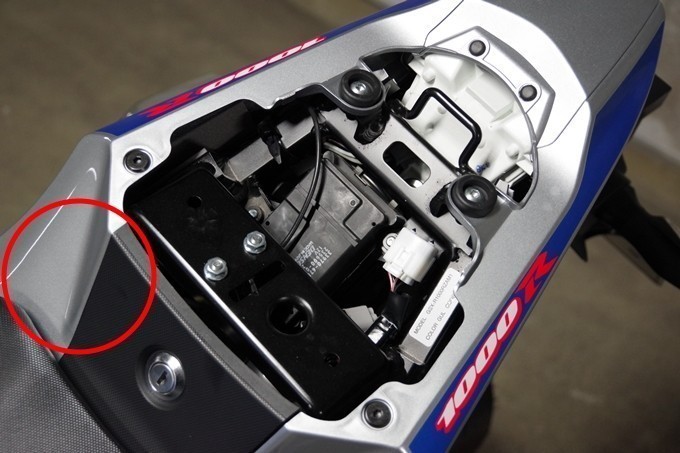- Suzuki GSX-R1000R Details and Test Ride Review
- More aggressive and more compact appearance
- Foot grounding
- I did a test ride
- All LED lights
- Necessary and sufficient full digital monitors
- Handlebar in the racy position
- The undercarriage is as good as aftermarket parts.
- MotoGP technology engine
- The tank has a great hold on the lower body
- ETC 2.0 is installed under the seat.
- What's the selling price you're wondering about!
- Summary
Suzuki GSX-R1000R Details and Test Ride Review
In March of this year, Suzuki Motor Corporation celebrated its 100th anniversary. To commemorate this milestone, the GSX-R1000R, featuring the GSX-RR design of Team SUZUKI ECSTAR, Suzuki's factory team that competes in MotoGP, is now available in a new 100th anniversary color.
Although only the livery has been changed, we would like to take another look at the GSX-R1000R's performance, which aims to be "The King of Sportbikes" and utilizes the latest technology developed in MotoGP!
More aggressive and more compact appearance
[Overall length/Ovearll width/Overall height]
2,075mm/705mm/1,145mm
[Curb weight]
203 kg
At first glance, I was surprised at the small body of the motorcycle. Is it 600cc or...? I even thought it was a good idea. There are other Suzuki litter motorcycles, such as the V-Strom, but it's hard to believe they're the same displacement. At the same time, I couldn't help but get excited at the thought of feeling the nearly 200 horsepower from this tiny chassis. The more aggressive form and detailing is sure to be a hit with many users. And if it's the same color as the Suzuki MotoGP factory team, you'll feel like a GP rider (lol).
Foot grounding
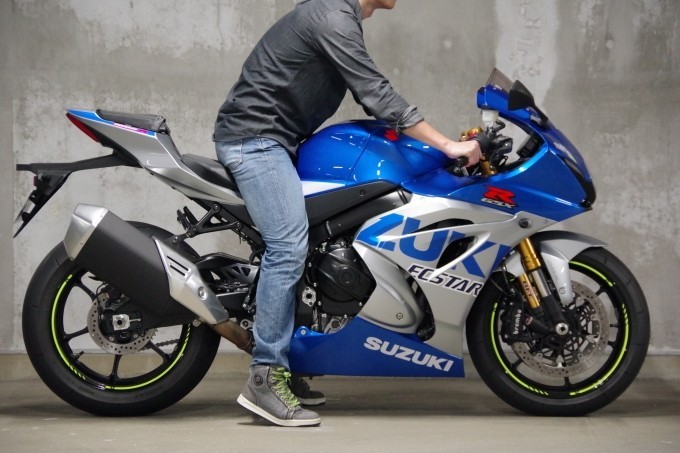 Staff height: 173cm, both feet are comfortable, but the heel is not attached.
Staff height: 173cm, both feet are comfortable, but the heel is not attached.
[Seat Height]
825mm
[Foot grounding]
The seat height of the previous generation GSX-R1000 is 810mm, so the seat height is a little higher at 825mm. More than that, maybe the setting of the suspension is hard, the rear does not sink too much when straddled, and I felt that it affects the footing.
I did a test ride
With nearly 200 horsepower, I wondered if I would be able to ride this motorcycle around town satisfactorily. I started the motorcycle with some trepidation, but my fears were instantly blown away. Not only did the motorcycle start smoothly with the low RPM assist that reduces the drop in RPM when starting, but it also did not feel jerky with thin torque even at low RPM. Not only can you cruise at 60km/h on the main road at 2,800rpm in 6th gear, but of course, if you open the throttle from there, it has enough torque to accelerate. If you're looking for a more dynamic driving experience, use 3rd and 4th gears at 4,000 rpm or higher, and you'll be able to experience moderate acceleration in town and on winding roads.
Electronic controls using the IMU (six-axis sensor) help the rider to ride comfortably.
Many people still think that electronic control is only effective when you're pushing the limits of the track, but the Suzuki Drive Mode Selector (S-DMS) and the Motion Track Traction Control System (TCS) make it possible to control the motorcycle's performance even when the road conditions are bad, such as in rainy weather. By limiting the power output to the optimum level, the rider has more room to maneuver. I tried riding around town with the S-DNS in A mode, which is the most responsive mode, and the throttle doesn't seem to have too much throttle stickiness to make it difficult to ride. If you're looking for an easier ride, B mode is just fine. The up-down quick shifter allows you to upshift around town with the throttle open, but at higher speeds, such as on the highway, it's a much more comfortable connection and we experienced smoother acceleration. When downshifting, it adjusts the revs without the clutch, which helps to reduce fatigue from clutch operation.
The weight of the equipment is 203kg, which is not too light, but I felt the lightness from the push and pull of the motorcycle. When I straddled it, it felt very small as well as the impression of the appearance, and the riding position felt like the body was close to the motorcycle naturally. Because of the weight balance and the position where the body and the motorcycle become one with the mass, the corners are fluttery. The tires are Bridgestone RS11s, which are quite fun to ride as they are.
This is a supersport motorcycle that is designed to be fast on the track, but it's also very street user-friendly. However, if we had to pick a strong point, it would be the position and water temperature. We felt that the position which is set up to be able to attack the normal position is hard for touring riders. The water temperature is also the fate of big motorcycles, but it can quickly exceed 100 degrees Celsius when riding around town. It does not become more than 105 degrees Celsius even at the traffic light by the fan turning, but it seems to be a battle with exhaust heat in the midsummer...
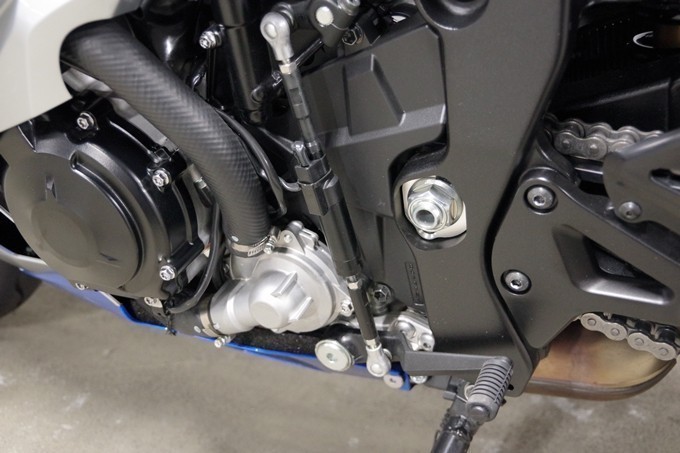 The up-down quick shifter has two levels of sensitivity adjustment.
The up-down quick shifter has two levels of sensitivity adjustment.
All LED lights
[Headlights]
The headlight design is based on the GSX-R's identity as an upper and lower binoculars. There are SRAD (Suzuki Ram Air Direct) intake ducts on either side of the headlights, but one of the things that makes this motorcycle so appealing is that the large ducts are designed in a way that doesn't make it look bad. A long and slender LED position light is placed on the top of the duct and the headlights are also LED. It appeals to the people around it for a sharp impression in the daytime as well as at night.
Another major change is that, starting with the K5 model, the blinkers with built-in mirrors, which have long been a feature of the GSX-R, are no longer used. In fact, the built-in mirror turn signals are quite heavy, and installing them on the side of the cowl, like this one, will also reduce the weight (I heard from Suzuki). As far as styling goes, many people may prefer the built-in mirrors because of their sharper body parts, but they're surprisingly small blinkers, so it doesn't bother you that much!
So, the mirrors are also normal. It's nice to be able to remove them without having to worry about wiring on the track, etc.
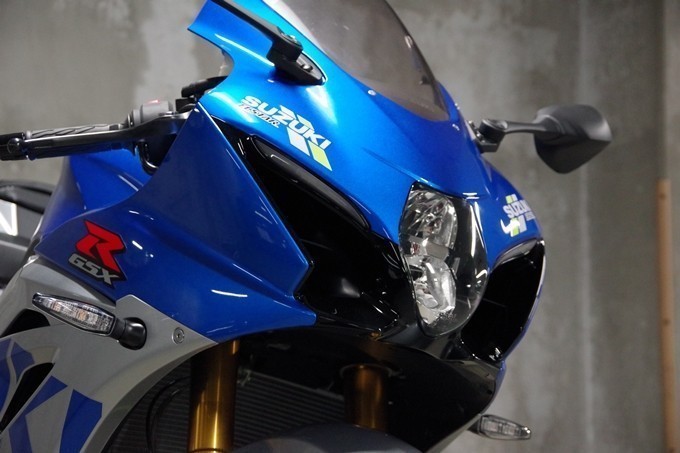 (The ram air ducts are installed on either side of the headlights.
(The ram air ducts are installed on either side of the headlights.
[Taillight]
The taillights have also been significantly redesigned. The GSX-R1000 was characterized by a tail area that was flattened to the side by the blinkers built into the cowl. From this time on, the taillights and cowl are very sharp, as are the rear fender-mounted blinkers. How super-sports with a pointed tip! It's really beautiful around the rear of the motorcycle. However, the taillights share the same design as the GSX250R and V-Strom 250, so we wanted something special that was typical of the flagship model.
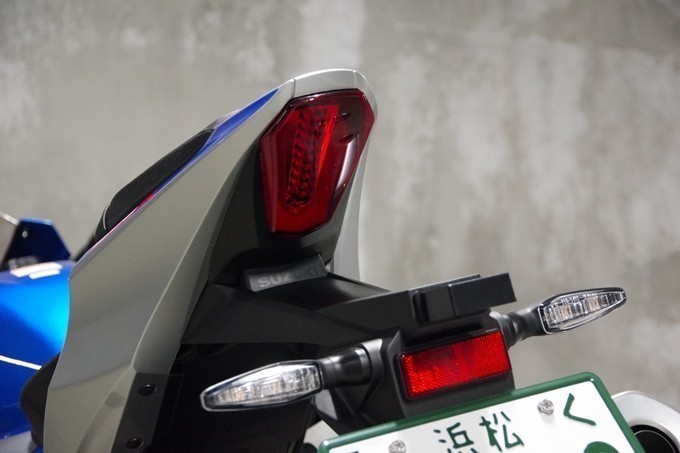 The taillights are sharper now that they have been replaced with stand-alone ones.
The taillights are sharper now that they have been replaced with stand-alone ones.
Necessary and sufficient full digital monitors
The GSX-R is a digital monitor, while other companies are using full-color TFT LCDs.
Nevertheless, it still covers enough information to provide the necessary information, such as the TRACON, S-DNS, and shift indicator.
Handlebar in the racy position
When I looked at the top bridge, I was surprised to see the front forks sticking out. It is one of the ways to set up the suspension on a track motorcycle, but the GSX-R1000R seems to have the front forks sticking out from the beginning. The handlebars are a little higher than the seat and the upper body naturally leans forward. It's not cramped, but long-distance touring seems to be hard on the body.
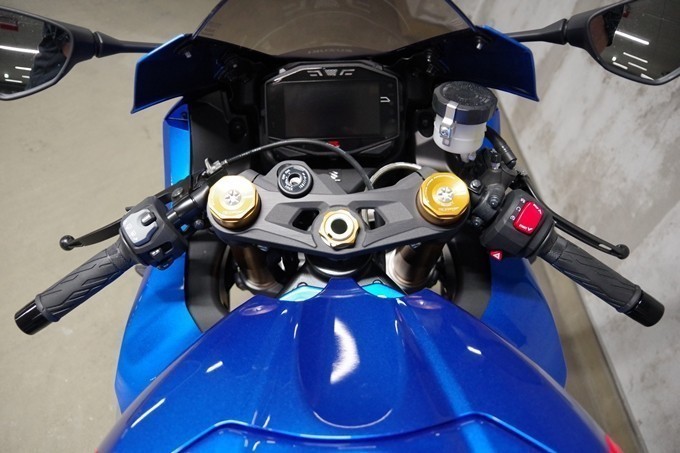 The front forks stick out of the top bridge.
The front forks stick out of the top bridge.
Of the electronic controls on the GSX-R1000R, the main electronic controls - the Suzuki Drive Mode Selector (S-DMS), the Motion Track TCS (Traction Control System) and Launch Control - are toggled by a steering wheel switch. There are relatively few switches, so you can switch between modes without hesitation. The starter switch, which is integrated with the kill switch, is equipped with the Suzuki Easy Start system, which starts the engine with a single push.
The undercarriage is as good as aftermarket parts.
[Brakes]
The front calipers are fitted with monoblock radial-mounted brake calipers from brembo. The brake discs are also fitted with brembo T-Drive floating mounts for excellent braking performance at high speeds. The custom mesh brake hoses are also included as standard equipment for a high level of brake touch and control.
It also features a motion track braking system that reduces rear-wheel lift under hard braking, which is highly effective on the track.
[Suspension]
SHOWA's BFF (Balance Free Frontfork) is installed at the front and SHOWA's BFRC lite (Balance Free Rear Cushion lite) is used for the rear suspension. It is equipped with SHOWA's BFRC lite (Balance Free Rear Cushion lite) for the rear suspension, and it is just like a race machine. Even with the standard settings, I felt it was a bit stiff in city driving, but on winding roads and high speed driving, it was firm and you could feel the grip of the tires. Because of the detailed settings, you'll likely have to ride the track to get the performance you want, but just being able to set it up in an "emergency" situation fills you with a sense of ownership.
The stem is equipped with an electronically controlled KYB steering damper, which helps to suppress any sudden steering behavior.
MotoGP technology engine
Maximum power output: 197PS/13,200 rpm
Maximum torque: 117N-m/10,800 rpm
The newly designed engine, which produces 197 horsepower, incorporates a number of MotoGP technologies, including a variable valve system. It features light clutch work and a slipper clutch that releases the back-torque generated during sudden downshifts. Combined with electronic control, this makes the engine powerful yet easy to handle on the street.
My first impression of the stock muffler was that it was too big and unrefined, but when I turned it on, I was mesmerized by its powerful sound. It's thrilling to hear the bass at idle and then gradually change to a racing sound as you open the throttle.
Even the stock silencers sound satisfying enough.
The tank has a great hold on the lower body
Tank capacity: 16L
It is a voluminous tank shape with an emphasis on knee grip and holds during banking. When I drove it mainly in town, on the highway and light winding roads, the actual fuel consumption was about 14 liters. I think the fuel consumption will be a little better in long-distance touring, but you need to be careful about the refueling timing.
ETC 2.0 is installed under the seat.
The main seat is narrow in front and widens out toward the rear, a major shape for SS motorcycles. It also comes with a tandem seat, but it's not very practical in terms of space under the seat, let alone comfort...
And this GSX-R1000R is an ETC2.0 is standard equipment. However, the quirky thing is its location. It is mounted in the red circle position in the image and the card cannot be inserted or removed by simply removing the tandem seat. You also have to remove the main seat and tail cowl in order to put the card in, and once you put the card in, you're going to have to leave it in for a while...
What's the selling price you're wondering about!
Manufacturer's Suggested Retail Price (including 10% sales tax)
2,156,000 yen
*As of July 2020
The price is also very attractive. For a motorcycle itself, it is very expensive, but the price of 2,156,000 yen including tax is the lowest price in its class, even though it is a high-end model, even though the Japanese super sports models are getting higher and higher in performance. With a powerful engine that is second to none, high-performance electronic control by the IMU, and a suspension that is as good as the aftermarket parts, this price is honestly a bargain.
Summary
The GSX-R1000R is Suzuki's flagship model. Although people tend to think that the track is the main battleground, the electronic control system makes it easy to handle in all areas and makes it fun to drive in a variety of situations. With all this equipment and power, the price of around 2 million yen is a great cosmetic value.
I need the latest Litter SS! You look great in style! If you're wondering what to do with your motorcycle, why don't you visit a motorcycle shop to see it in action?
Photo by: Suzuki Motorcycle Co.
See SUZUKI Moto Index Page
See Accessories for SUZUKI GSX-R1000R


